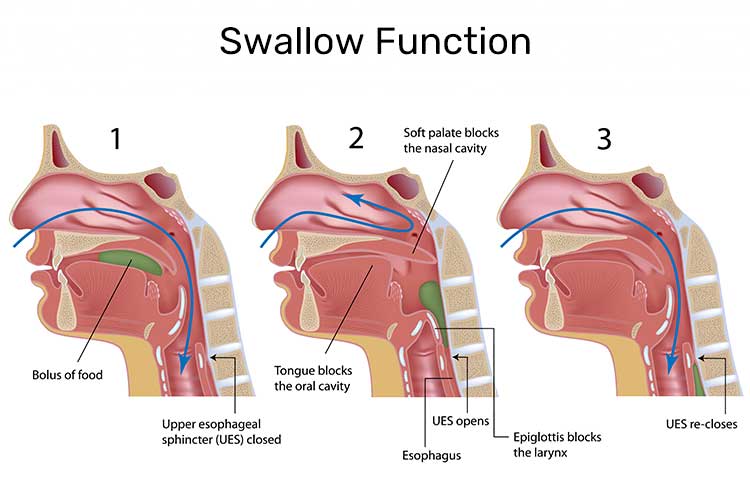Introduction
In the dynamic world of healthcare, dysphagia-- typically described as trouble ingesting-- has actually emerged as a substantial issue. This problem does not simply affect a person's capacity to eat; it can lead to extreme difficulties such as lack of nutrition, dehydration, and desire pneumonia. For that reason, outfitting care personnel with the necessary tools for handling dysphagia properly is paramount.
In this comprehensive overview, we will check out various elements of dysphagia monitoring, concentrating on dysphagia training for carers, dysphagia care training, and the importance of organized training courses targeted at cultivating knowledge in this necessary location. From recognizing the essentials of dysphagia to carrying out reliable communication techniques, this short article aims to supply a durable foundation for treatment staff.
Understanding Dysphagia: What is It?
What Causes Dysphagia?
Dysphagia can occur from various underlying conditions such as stroke, neurological conditions, or perhaps architectural abnormalities in the throat or esophagus. Each situation is distinct, demanding tailored interventions.
The Value of Very early Detection
Recognizing dysphagia early can make all the distinction. Symptoms like coughing throughout dishes or a sensation of food obtaining stuck are indicators that must never be ignored.
Types of Dysphagia
Dysphagia is usually categorized into 2 primary kinds: oropharyngeal and esophageal dysphagia. Comprehending these differences is critical for appropriate monitoring strategies.
Equipping Care Personnel with the Tools for Handling Dysphagia Effectively
Training Programs: The Backbone of Effective Care
Implementing extensive training programs is important for any kind of treatment center aiming to offer superior assistance for locals experiencing dysphagia.
Components of Dysphagia Training Courses
These programs often cover:
- Identification and assessment techniques Safe swallowing practices Nutritional considerations Emergency action protocols
The Function of Evidence-Based Technique in Dysphagia Support
Utilizing evidence-based methods ensures that treatment personnel utilize approaches that have actually been medically confirmed to be effective.
Why Invest in Dysphagia Training for Carers?
Enhancing Top quality of Life
Effective administration of dysphagia brings about boosted quality of life for people impacted by it. Trained staff can aid guarantee safety and security throughout nourishments and supply psychological support.

Reducing Healthcare Costs
Proper training minimizes threats related to dysphagia-- like healthcare facility readmissions-- consequently lowering total health care expenditures.

The Framework and Material of a Dysphagia Training Course
Course Objectives
Most programs intend to attain particular purposes such as improving understanding regarding swallowing systems and familiarizing team with various assessment tools.
Interactive Learning Approaches
Incorporating interactive aspects like role-playing scenarios or simulations can considerably boost the understanding experience for treatment staff.
Dysphagia Training for Nurses: A Specialized Focus
Unique Obstacles Faced by Nurses
Nurses frequently come across patients with complex case histories where dysphagia may be just one aspect of their care. Specialized training furnishes them with the abilities required to manage dysphagia training for nurses these complexities effectively.

Integration with Various other Medical Protocols
Nurses should be experienced at integrating dysphagia administration within broader medical therapy strategies, ensuring cohesive patient care.
Creating a Safe Setting for Individuals with Dysphagia
Dining Considerations
Meal prep work need to consider texture-modified diets and suitable meal settings that cultivate convenience and safety during eating.
Supervision During Meals
Care team need to be educated on just how to manage individuals while they eat, staying vigilant for any type of indications of distress or trouble swallowing.
Communication Strategies in Taking care of Dysphasia
Importance of Clear Communication
Effective interaction between care staff and locals is essential. Staff must find out how to discuss nutritional limitations plainly without creating anxiousness regarding eating.
** Using Visual Aids
Visual aids can serve as beneficial tools when interacting vital info relating to dietary adjustments or secure ingesting techniques.
Support Systems within Treatment Facilities
** Establishing a Multidisciplinary Team
Having a group that includes speech specialists, dietitians, and nursing personnel fosters an atmosphere where extensive treatment thrives.
** Family Involvement
Engaging member of the family in discussions about their loved one's condition not only sustains psychological well-being but also develops a common understanding which can positively influence compliance with nutritional recommendations.
FAQs About Handling Dysphasia
What prevail signs and symptoms of dysplasia?
Common symptoms include coughing while consuming, difficulty managing food in the mouth, and regurgitation.
How can I understand if someone has dysplasia?
Look out for adjustments in eating routines, weight loss, or grievances about trouble swallowing.
Is there a certain diet recommended?
Yes! Soft foods and thickened fluids are commonly advised based on individual analyses by healthcare professionals.
Can medicines affect ingesting ability?
Absolutely! Some medicines might trigger completely dry mouth or opposite results that impact ingesting comfort.
How frequently needs to training be updated?
Regular updates (a minimum of every year) guarantee that treatment personnel remain notified about finest methods associated with dysplasia management.
li10/ol1/hr2hr2/##
This post acts as an extensive source focused on promoting understanding amongst caretakers concerning managing dyspraxia successfully through correct training initiatives while likewise giving actionable understandings right into developing helpful settings for recovery.